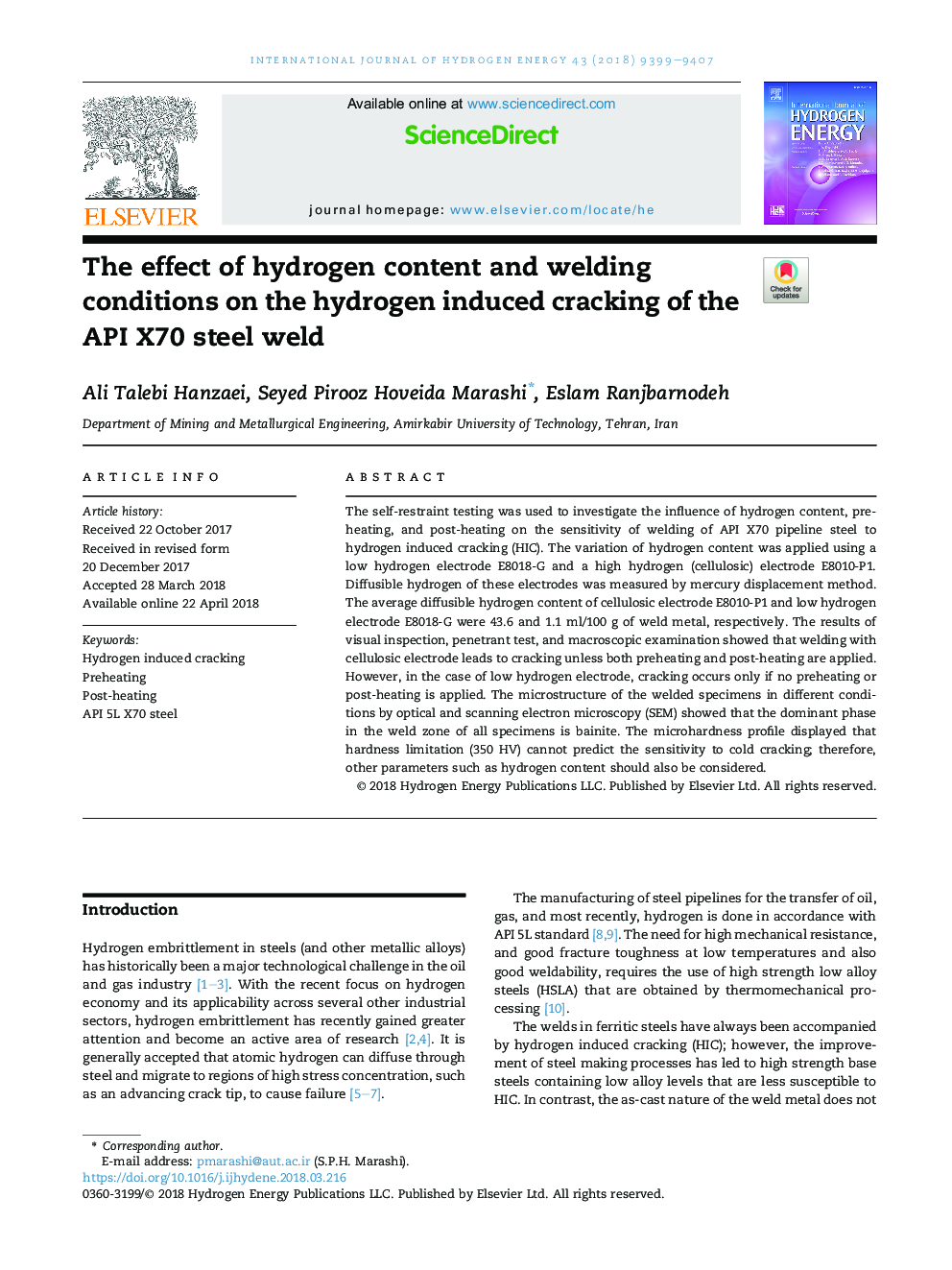| Article ID | Journal | Published Year | Pages | File Type |
|---|---|---|---|---|
| 7706161 | International Journal of Hydrogen Energy | 2018 | 9 Pages |
Abstract
The self-restraint testing was used to investigate the influence of hydrogen content, preheating, and post-heating on the sensitivity of welding of API X70 pipeline steel to hydrogen induced cracking (HIC). The variation of hydrogen content was applied using a low hydrogen electrode E8018-G and a high hydrogen (cellulosic) electrode E8010-P1. Diffusible hydrogen of these electrodes was measured by mercury displacement method. The average diffusible hydrogen content of cellulosic electrode E8010-P1 and low hydrogen electrode E8018-G were 43.6 and 1.1Â ml/100Â g of weld metal, respectively. The results of visual inspection, penetrant test, and macroscopic examination showed that welding with cellulosic electrode leads to cracking unless both preheating and post-heating are applied. However, in the case of low hydrogen electrode, cracking occurs only if no preheating or post-heating is applied. The microstructure of the welded specimens in different conditions by optical and scanning electron microscopy (SEM) showed that the dominant phase in the weld zone of all specimens is bainite. The microhardness profile displayed that hardness limitation (350Â HV) cannot predict the sensitivity to cold cracking; therefore, other parameters such as hydrogen content should also be considered.
Keywords
Related Topics
Physical Sciences and Engineering
Chemistry
Electrochemistry
Authors
Ali Talebi Hanzaei, Seyed Pirooz Hoveida Marashi, Eslam Ranjbarnodeh,
